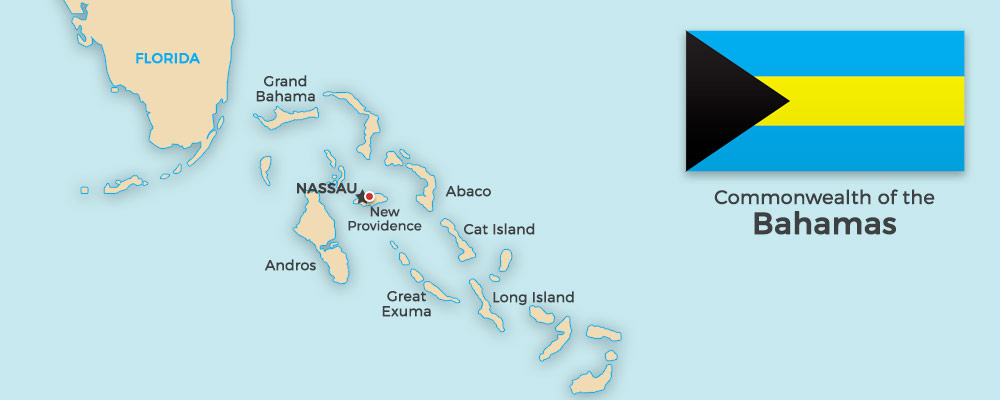The Bahamas

Posted on November 10, 2017
Tourism accounts for approximately 75-80% of the GDP of The Bahamas and directly or indirectly employs half of the archipelago’s labour Force. More than 1.5 million stopover visitors and 3.5 million cruise visitors visit our islands annually. They engage in a variety of activities inclusive of fishing, deep sea diving, sail boat and yacht sailing, casino gambling, fine dining and many other vacation activities.
The Bahamas located in the Caribbean Sea of the Atlantic Ocean is a major cruising area for all the major cruise lines out of Florida Ports. There is a very close relationship between AASLifeFlight and our tourism partners.
AASLifeFlight received a call just after 8:30 pm this evening from a cruise line whose ship was traveling the Caribbean Sea between The Bahamas and Cuba. One of their guest, a 45-year- old female, had just sat down to dinner and suffered a massive stroke. She was in need of urgent medical care not available on the cruise ship which was over 16 hours away from the next port of entry.
Frantic calls were made to the US Coast Guard to assist with the rescue of this critically ill, US citizen, on the high seas. They agreed and dispatch one of their helicopters to rendezvous with the cruise ship.
AASLifeFlight, fixed wing dedicated King Air B200 air ambulance was requested to meet the US Coast Guard’s helicopter with the critically ill patient at midnight on the Island of Great Inagua, the southernmost island in The Bahamas.
After debriefing by the Medical Director, our medical team of a flight physician, critical care nurse, emergency medical technician and two (2) pilots with all necessary critical care medical equipment and supplies were wheels up at 10:31 pm with the estimated time of arrival 12:00 am. This was a time sensitive emergency.
At 11:45 pm the co-pilot made a position report for any air traffic in the vicinity of Great Inagua, the only response was that of the US Coast Guard helicopter with an ETA of 12:00 am Great Inagua.
Five (5) minutes before landing Inagua, the US Coast Guard helicopter pilot reported the runway lights at Inagua were suddenly not operational and they would have to divert to Providenciales, Turks and Caicos, where the runway would be lighted. The quick thinking Captain of the medevac ICU aircraft decided, that this would not be in the best interest of the patient and crew as it would add considerably more time to the transport.
So, he went to his emergency landing procedure requesting the US Coast Guard to remain at Great Inagua, hovering, shining it big beam light at the runway threshold, with airport personal positioning six (6) cars off the sides of the runway with flashing hazard lights marking the runway. Our aircraft circled overhead to ensure everything was in place and landed safely.
The patient and accompanying medical personnel was transferred from the helicopter to our medevac ICU aircraft, assessed and stabilized. Our aircraft departed Inagua at 12:40am and arrived Ft. Lauderdale International Airport at 2:40 am. The young female was immediately transferred to a nearby hospital and is now on the road to full recovery.
Had the efforts of the cruise line, US Coast Guard, Bahamas Civil Aviation Department and the services of AASLifeFlight not been available that night, a fatality at sea would have likely occurred.